Reviews
5 Outstanding Artists From ‘Super-Rough,’ the Experimental Exhibition Takashi Murakami Curated for the Outsider Art Fair
Murakami brings some flair to the proceedings with a knowingly cluttered display.
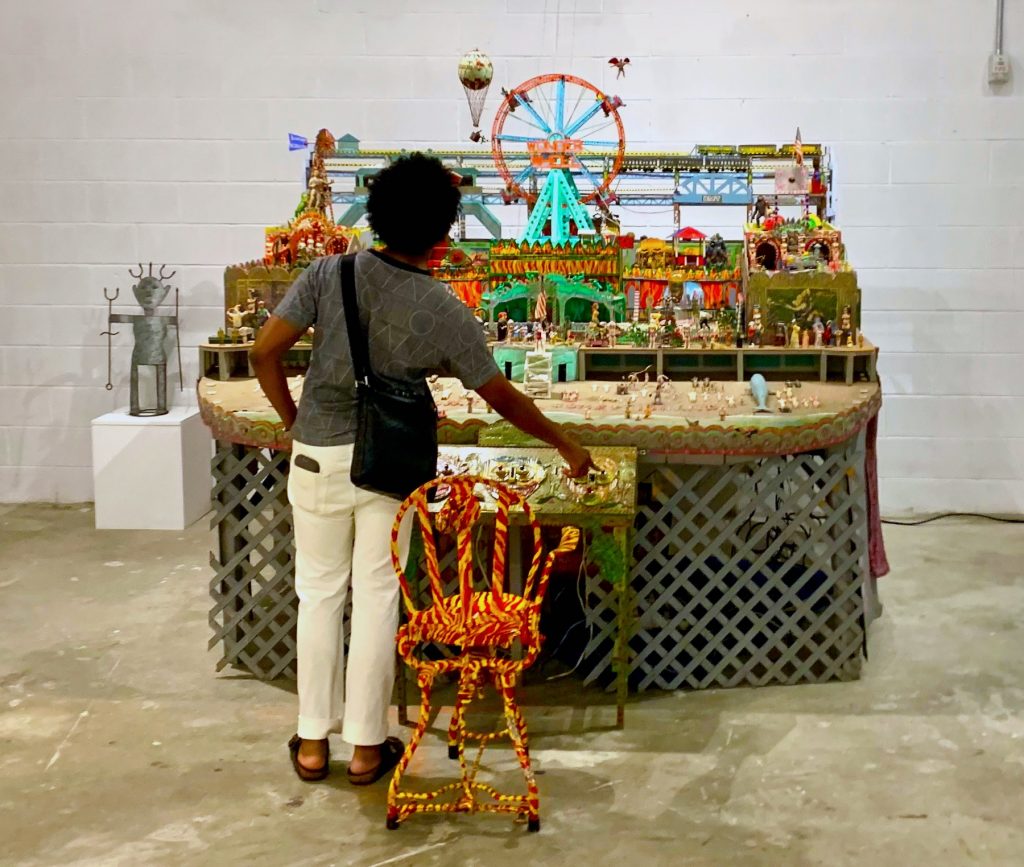
Murakami brings some flair to the proceedings with a knowingly cluttered display.

Ben Davis

“Super-Rough” is a pop-up, one-off extension of the Outsider Art Fair that displays a curated selection of highlights from galleries associated with the event.
The hook for me is that I love this material. The hook from a broader cultural perspective is that the show was overseen by Takashi Murakami, the Japanese neo-pop artist famous for his collabs with fashion brands and stars like Billie Eilish (and sometimes, both, as in the recent Murakami x Eilish x Uniqlo T-shirt line).
The main novel installation device here is to show all the work arrayed together on one long waist-height display pedestal, a kind of buffet sampling of Outsider Art Fair fare. A few more spectacular works and larger sculptures are dotted around the edges, but mainly we are talking about a crowd of small, tabletop objects: Eugene Von Bruenchenhein’s remarkable little chicken bone thrones; Jordan Laura MacLachlan’s quietly surreal painted clay figures; the artist known as Jerry the Marble Faun’s limestone beast heads.
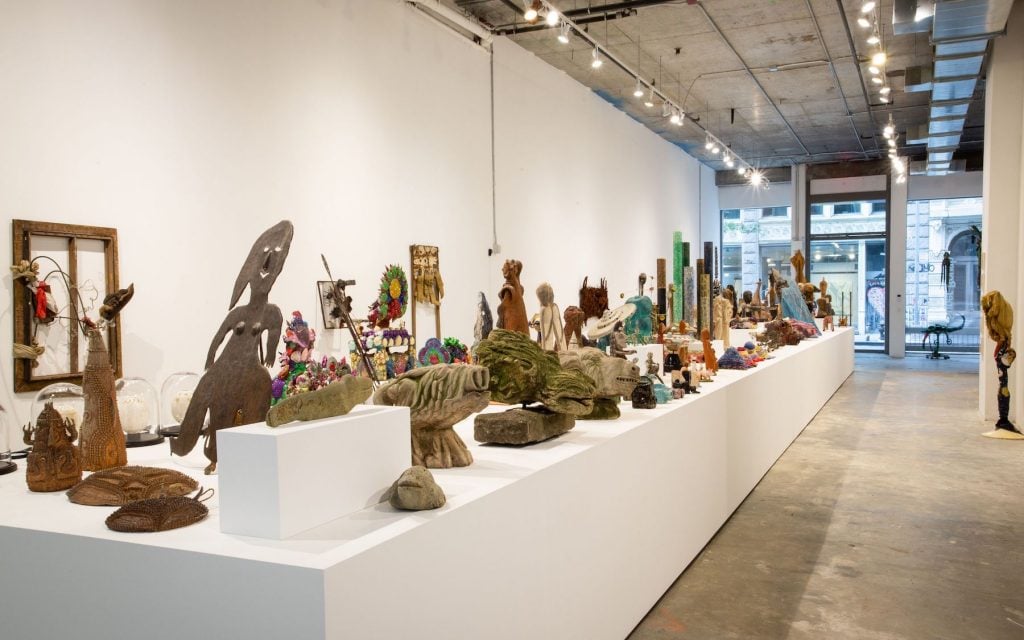
Installation view of “Super-Rough.” Photo courtesy the Outsider Art Fair.
Talking to the New York Times, Murakami is endearingly effusive about the work. The name “Super-Rough” is a reversal of “Superflat,” the long ago title of an art exhibition that made Murakami’s brand of anime-inflected pop famous, and that also stood as shorthand for his theory of the cultural dynamics of post-war Japanese visual culture. I’m not sure, however, that he has quite as much of a theory of the material he’s marshaling here.
After circling the display a few times, I began to regret slightly the lack of attention on individual artists. Whether it’s because of Murakami’s pop sensibility—pop art being art relating to popular culture, which doesn’t really need a lot of explanation—or the event’s role as an extension of a commercial fair, the only contextualizing material on hand is a checklist with prices. (I should say: the online viewing room is a little more helpful.)
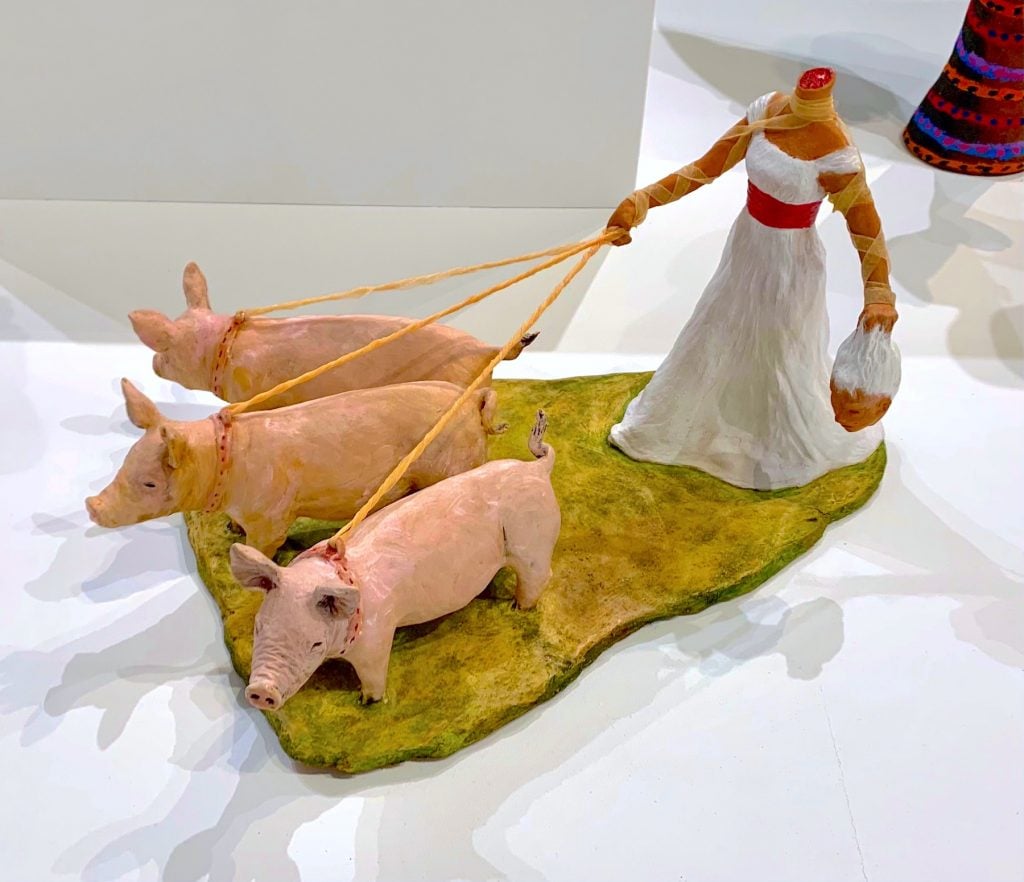
Jordan Laura MacLachlan, Woman with Three Pigs (2010-2011), from Marion Harris gallery, shows in “Super-Rough.” Photo by Ben Davis.
These are interesting figures—but not always easy ones to research outside of combing back issues of Raw Vision magazine. They tend toward personal, idiosyncratic ways of working—that’s part of this type of work’s pleasure—and there’s a benefit to knowing something about where they are coming from. The show’s knowing elevation of a yard sale is fun, but it doesn’t do anything to make entering the work easier.
Here’s a joke. Q: “Did you manage to get to know any artists you liked at Murakami’s Outsider Art Fair show?” A: “I did—but it was super-rough!”
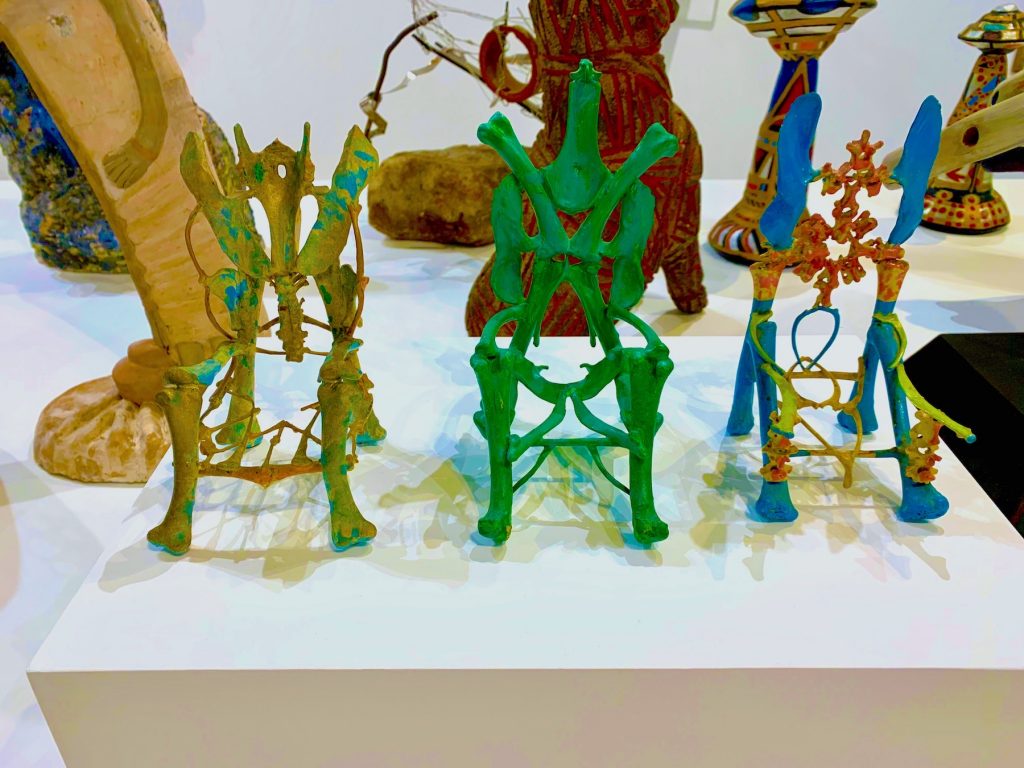
Three works by Eugene Von Bruenchenhein, from the Gallery of Everything, in “Super-Rough.” Photo by Ben Davis.
This is a technical gripe though, and a boring one. If you are interested at all in the Outsider Art Fair as a proposition, the show offers a tableful of starting points for things to get excited about. I recommend it.
Here’s a guide to a few figures I came away wanting to know more about.
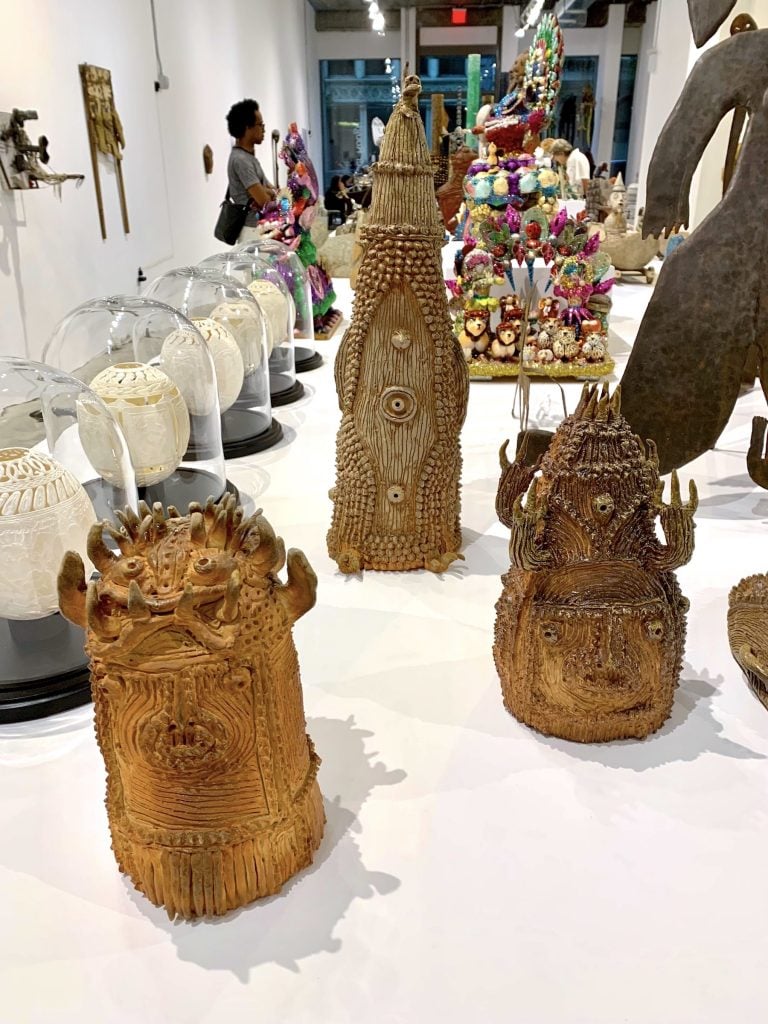
Multiple works by Shinichi Sawada, from Venus Over Manhattan and Jennifer Lauren Gallery, in “Super-Rough.” Photo by Ben Davis.
I got to see a bunch of Sawada’s delightful clay creatures recently at Venus Over Manhattan, but it’s a delight to find them again here (they were also featured in the 2013 Venice Biennale). The artist, who is on the autism spectrum, has an immediately recognizable style. It evokes the frozen exaggerations of ceremonial masks or props for a festival of imagined creatures.
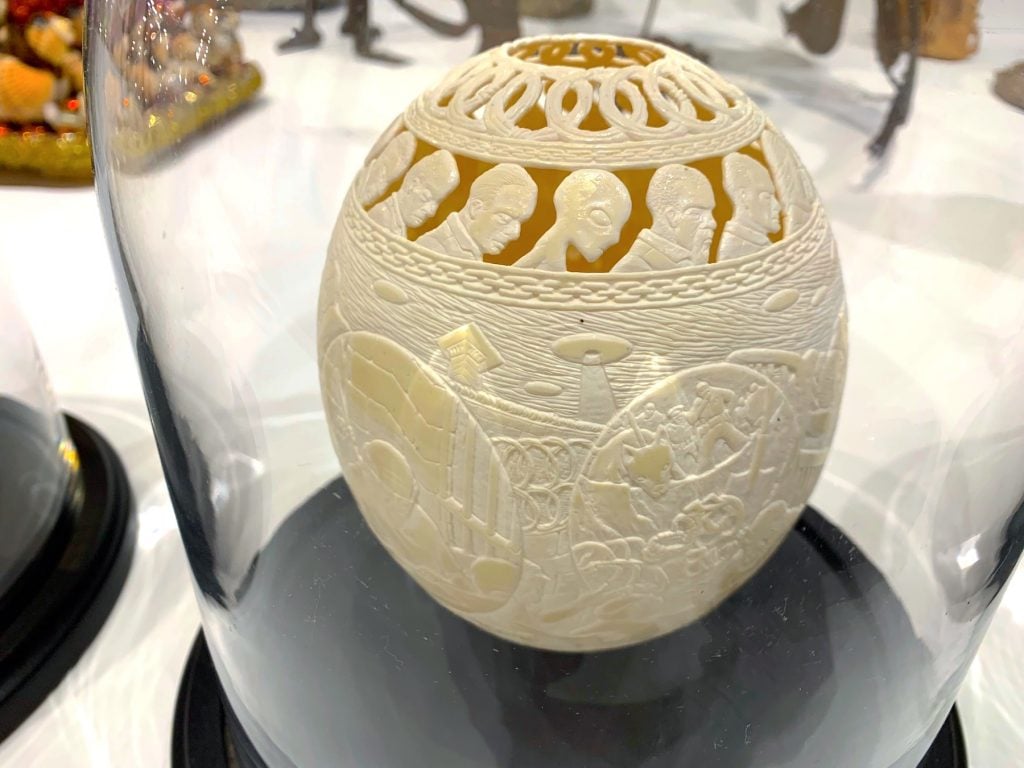
Gil Batle, Abducted (2017), from Ricco/Maresca Gallery in “Super-Rough.” Photo by Ben Davis.
Having formerly spent multiple stints in a California prison for fraud and forgery, Batle (b. 1962) has created a novel new life for himself carving ostrich eggs, telling stories of people he’s met and known. They are tremendously detailed, displayed here with magnifying glasses for review (though you can’t actually see all sides of each egg in the “Super-Rough” display).
The fragile medium and decorative intricacy lends a kind of calming order to the often disturbing, frieze-like stories, as if the artist were turning painful lived experience into manageably controlled form. When you really look at the details, they are often bracingly grim—though a work like Abducted also includes a vision of flying saucers.
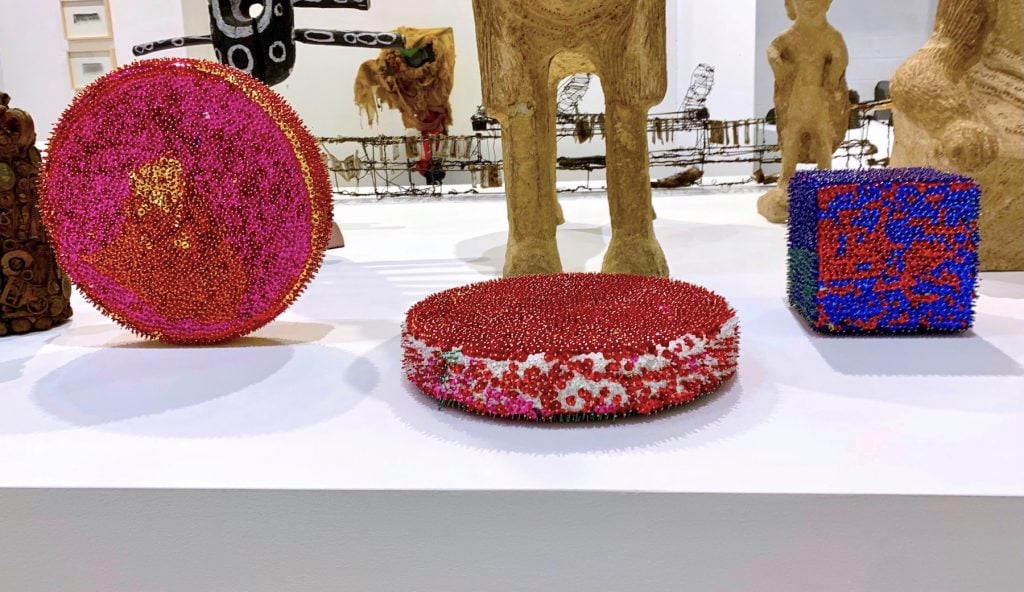
Three works by Monica Valentine in “Super-Rough,” from Creative Growth Art Center. Photo by Ben Davis.
There’s this wonderful all-over tactility to Valentine’s sculptures, which are simple foam volumes adorned with colored sequins. Now associated with San Francisco’s famed Creative Growth Art Center (you can see her at work in an Art21 episode from a few years back), Valentine lost her sight as a girl and composes her work by feel. When you look at the pieces up close you really get a sense of how intricately individual they are, each sequin carefully speared in place by a pin.
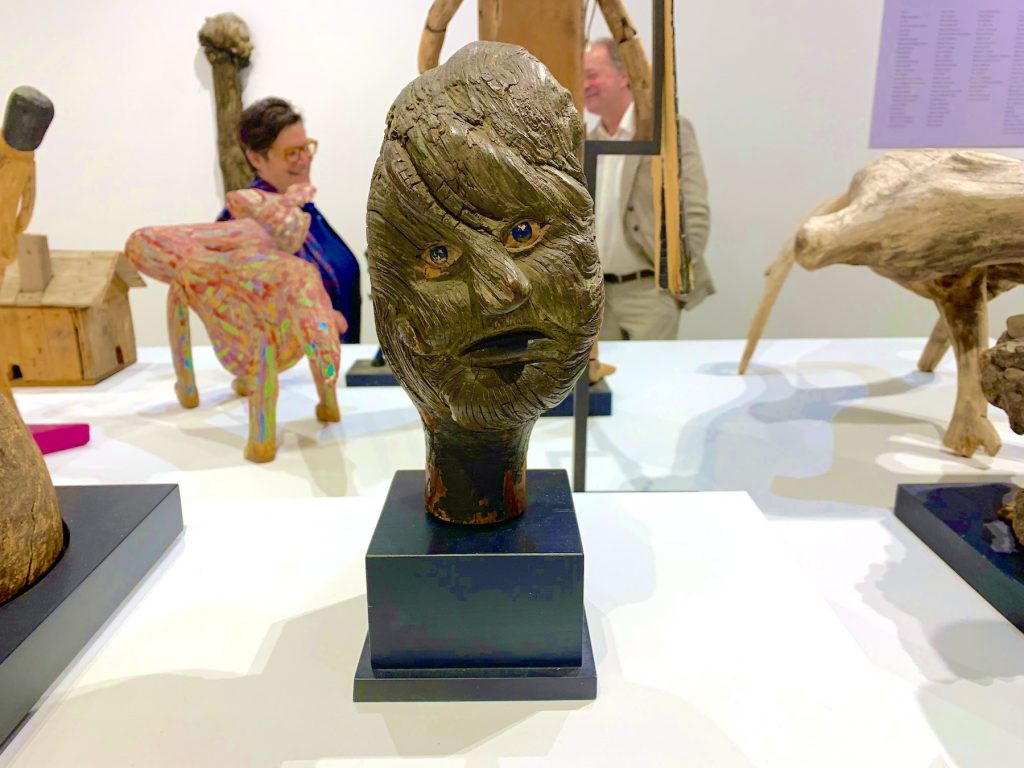
Moses Ogden, Twisted Head (ca. 1900), from Steven S. Powers, in “Super-Rough.” Photo by Ben Davis.
Ogden, who was born in 1844 and fought in the Civil War, is known for the sculpture garden of curiosities he created in and around his cabin in Angelica, New York, “Moses Ogden’s Wonderland.” His work involved taking found pieces of wood and transforming them into spooky sculpture, bringing out whatever form he saw haunting them. How great is this eerie Twisted Head?
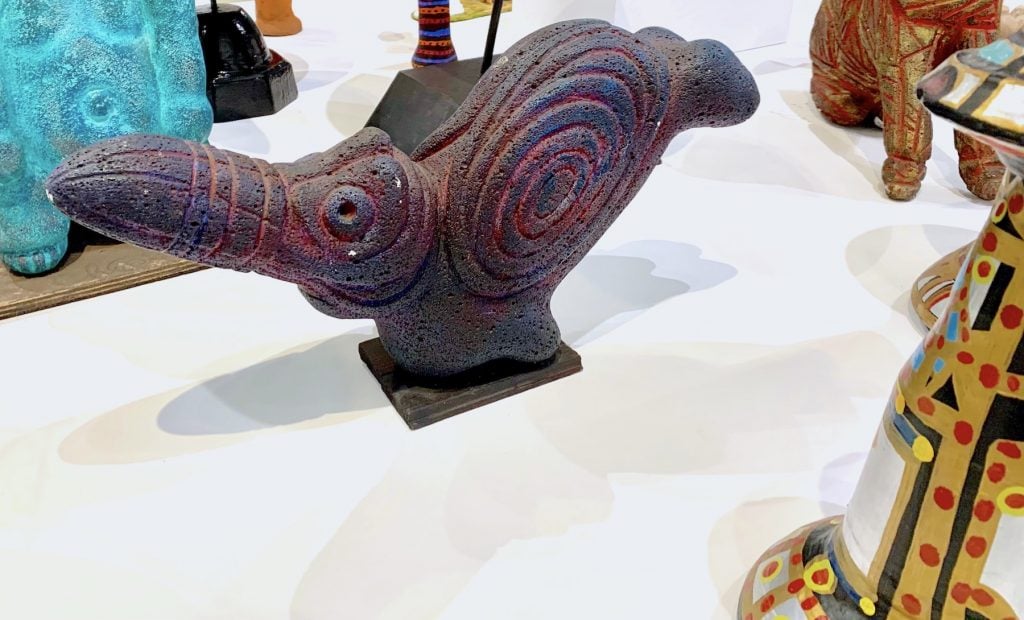
Chomo, Untitled (ca.1960/70) from the Gallery of Everything in “Super-Rough.” Photo by Ben Davis.
French artist Roger Chomeaux, aka Chomo (1907-1999), was known, like Ogden, for a world he built: the Realm of Preludian Art, located in the forest near Fontainbleau, where he lived, building up his many creations. Pieces like this untitled one have a quality of suggesting a gargoyle for some kind of pagan cathedral but not quite arriving at a recognizable shape, floating confidently at the edge of meaning—sort of mirroring the way Chomo himself floated at the edge of the official culture, in self-imposed exile.
“Super-Rough” is on view at 150 Wooster Street, New York, through June 27, 2021.